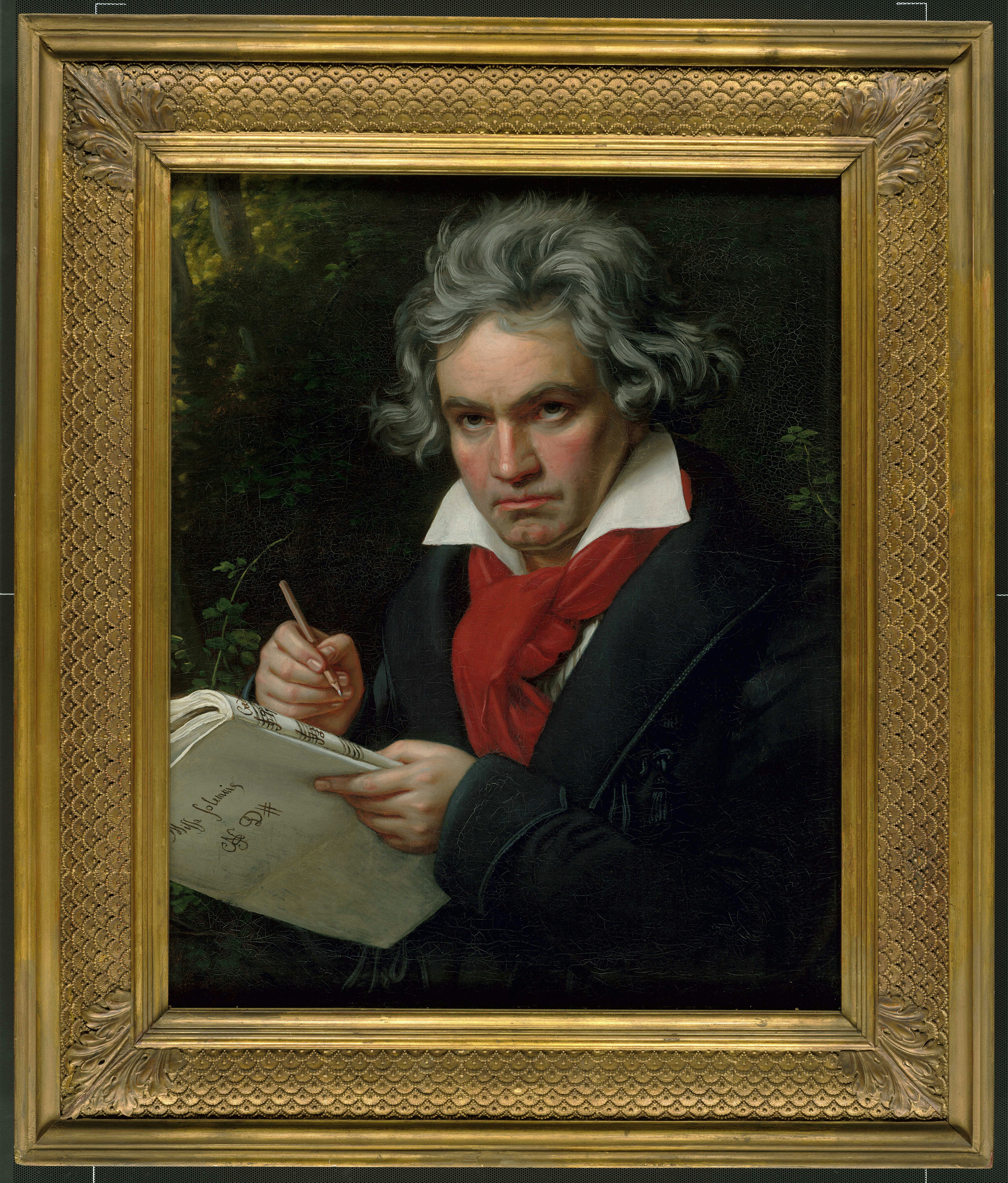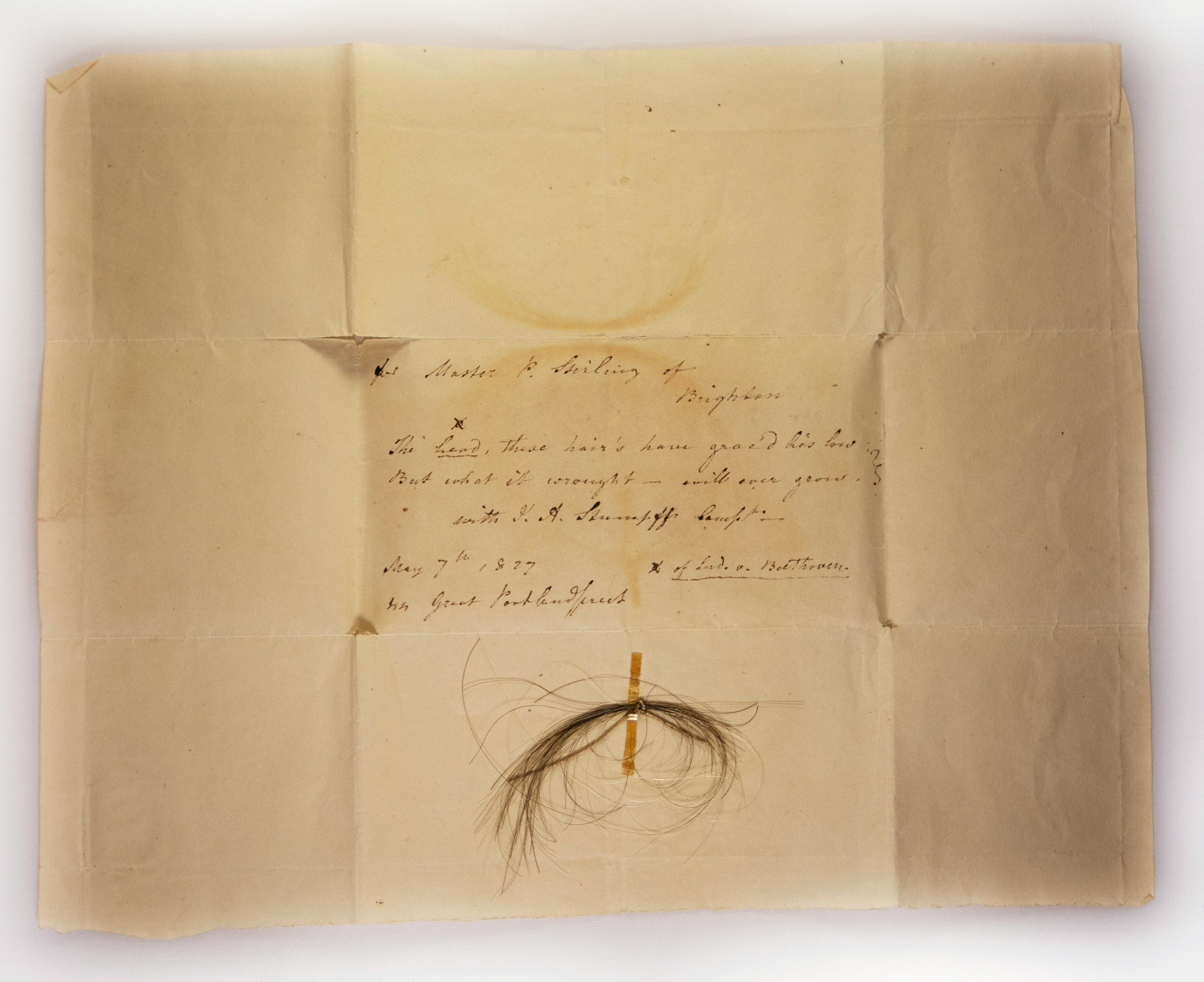
Beethoven is remembered as one of history’s greatest composers, but his life wasn’t always as upbeat and light as his music.
Throughout much of his adult life, Beethoven lived with a series of chronic and degenerative illnesses, the most well-known of which was his progressive hearing loss. In addition to his hearing, Beethoven also lived with gastrointestinal problems and would eventually die of a liver condition at the age of 56 in 1827, though the specifics of his various health conditions were never fully known.
The exact diagnosis and cause of Beethoven’s illnesses have long interested historians. Now, using locks of the composer's hair and genomic analysis, an international team of researchers has new insight into Beethoven's health and ancestry. The findings were published Wednesday in the journal Current Biology.
What plagued Beethoven?
Toomas Kivisild is a coauthor of the paper and head of the laboratory for human evolutionary genetics at KU Leuven, a research university in Belgium. He tells Inverse that his initial interest in studying Beethoven’s health came at the behest of the composer himself.
“Beethoven himself requested his disease to be studied, and the outcome made public,” Kivisild says. In a letter called the Heiligenstadt Testament, which was discovered days after Beethoven’s death, the composer requested his favorite doctor to determine the cause of his illnesses. Unfortunately, Beethoven outlived his favorite physician, Dr. Johann Adam Schmidt, meaning his wishes were never granted.
Now, newer technology is making that wish more plausible. “The whole genome sequencing was inspired by the availability of a number of historically well-documented locks and made possible by new developments in ancient DNA analyses,” says Kivisild.
This latest analysis is not the first time that Beethoven’s DNA has been analyzed, but Kivisild points out that previous analyses of Beethoven’s DNA through locks of his hair made a grave error: the hair wasn’t Beethoven’s at all.
After comparing the DNA of eight samples of hair alleged to be Beethoven’s, Kivisild and colleagues only found five samples whose DNA matched Beethoven’s German ancestry. In particular, the team found that one of the most famous samples of Beethoven’s hair —which had previously led historians to consider whether the composer suffered from lead poisoning— instead came from a woman of Middle Eastern descent.
From the five samples of hair determined to likely be Beethoven’s (they all had the same ancestry that Beethoven had), the researchers sequenced the genome from the best-preserved sample.

Unraveling Beethoven’s genome
By looking at Beethoven’s genome and comparing his genes with those known to be associated with certain health outcomes, the researchers were able to zero in on some key features of Beethoven’s illnesses. In particular, that he had a predisposition for liver disease and that he was infected with Hepatitis B.
Combined with Beethoven’s history of moderate to heavy drinking, researchers believe that these conditions could have contributed to his death by cirrhosis, or severe liver scarring.
This analysis also provided some new insight into Beethoven’s gastrointestinal problems, particularly that he likely did not have celiac disease, lactose intolerance, or irritable bowel syndrome based on the relative absence of genes related to these conditions. However, the team did not see any genetic explanation for the composer’s hearing loss.
In many ways, this is to be expected, Kivisild says. After all, many diseases are multifactorial, meaning that the interaction between genes and their respective contributions to a condition is difficult to determine.
“In addressing questions about genetic contributions to disease and appearances, one has to consider the limitations in our understanding of which genetic variants are important,” he says. “Finding no answer does not mean that genetic causes can be ruled out.”
What’s next for the research
This work is far from the end of the search to better understand Beethoven’s illnesses. As the relationship between genes and disease continues to be better understood, the researchers hope that there will be an opportunity to revisit Beethoven’s genome with new eyes.
They are also excited to pursue an unexpected ancestry finding from their analysis — an extramarital affair in his father’s lineage.
“It is possible that new insights about Beethoven's biological patrilineage will be offered in the future by the ever-increasing genealogical and ancestry databases that are driven by customer curiosity,” Kivisild says.







